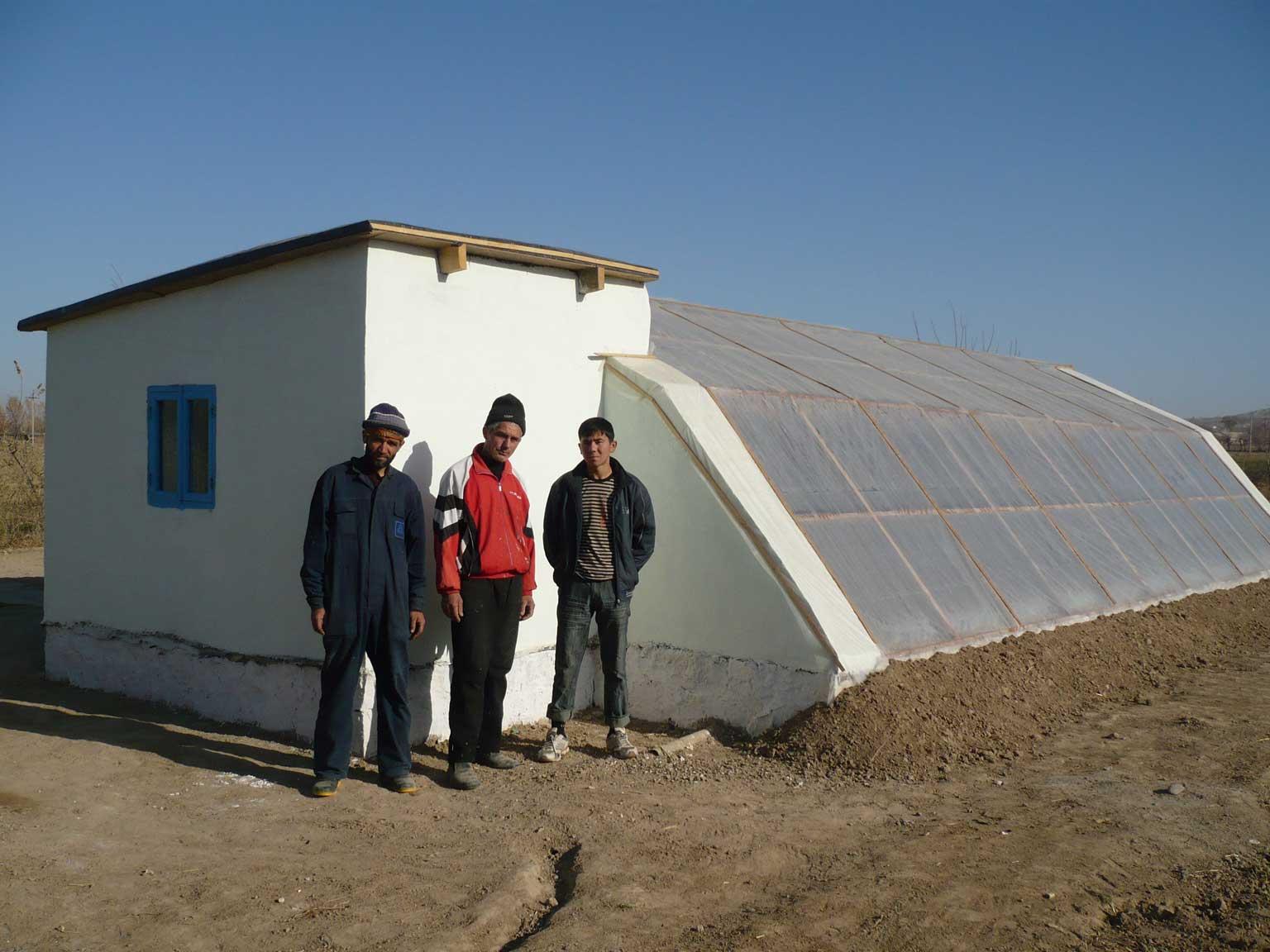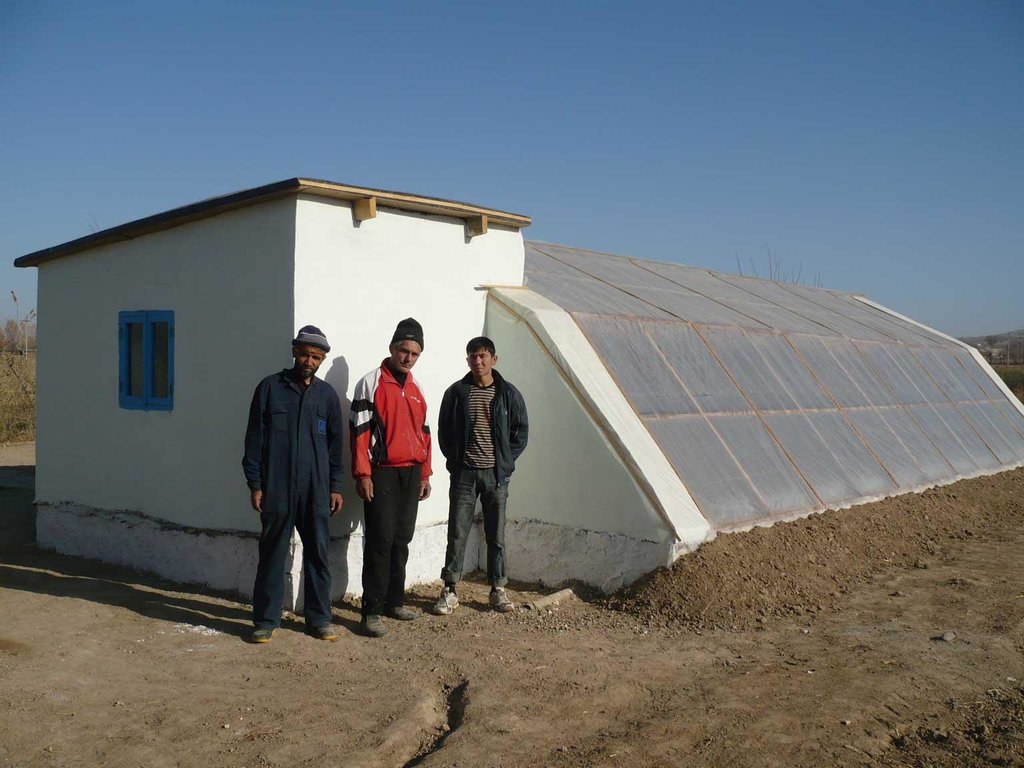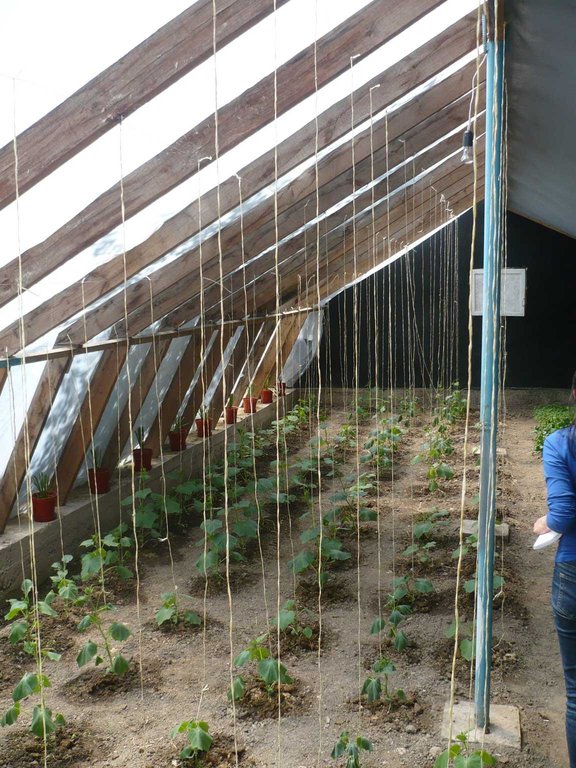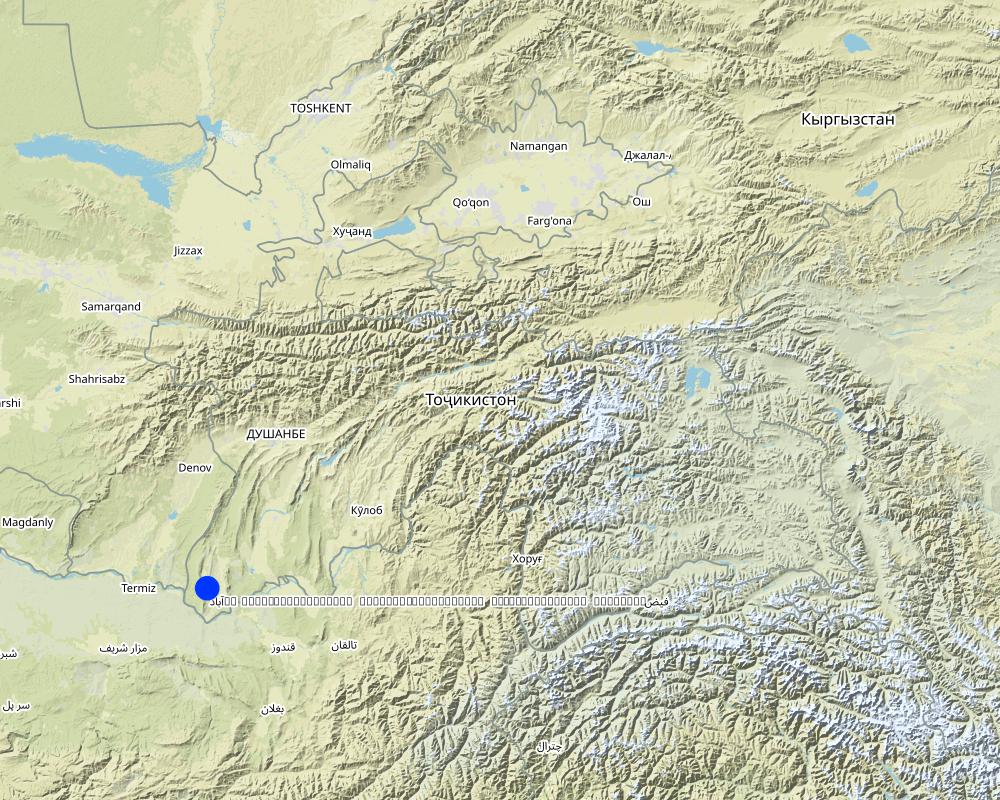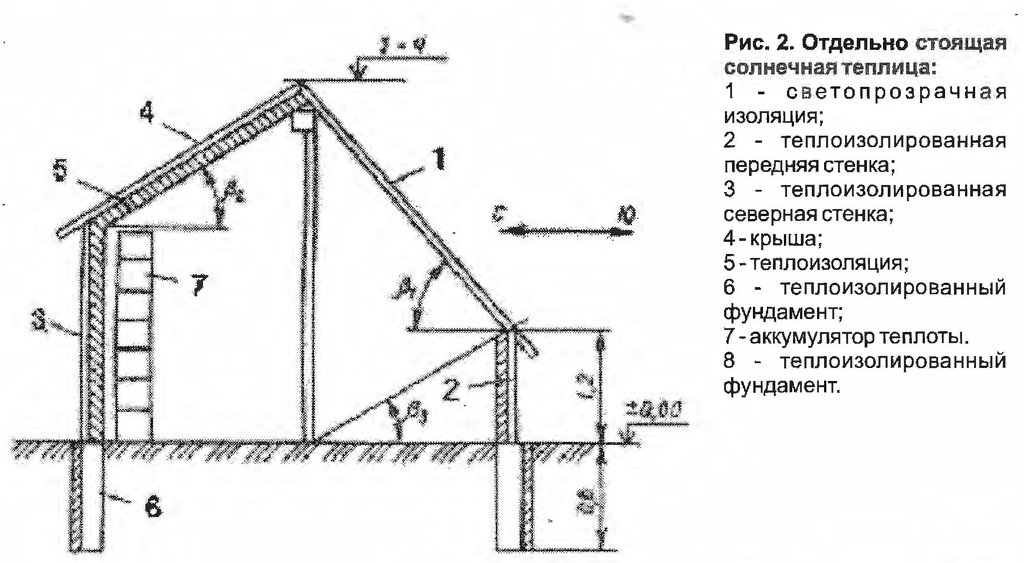Cолнечные теплицы [طاجيكستان]
- تاريخ الإنشاء:
- تحديث:
- جامع المعلومات: Rustam Kalandarov
- المحرر: –
- المراجعون: Alexandra Gavilano, David Streiff, Joana Eichenberger
Гармхонаи офтоби
technologies_1032 - طاجيكستان
عرض الأقسام
توسيع الكل طي الكل1. معلومات عامة
1.2 تفاصيل الاتصال بالأشخاص الرئيسيين لمصدر المعلومات والمؤسسات المشاركة في تقييم وتوثيق التقنية
اسم المشروع الذي سهّل توثيق/تقييم التقنية (إذا كان ذلك على صلة)
Pilot Program for Climate Resilience, Tajikistan (WB / PPCR)اسم المؤسسة (المؤسسات) التي سهلت توثيق/تقييم التقنية (إذا كان ذلك على صلة)
Youth Ecological Center, Tajikistan (Youth Ecological Center, Tajikistan) - طاجيكستان1.3 الشروط المتعلقة باستخدام البيانات الموثقة من خلال WOCAT
يوافق جامع المعلومات والشخص (لاشخاص) الرئيسي لمصدر المعلومات على الشروط المتعلقة باستخدام البيانات الموثقة من خلال WOCAT:
نعم
2. وصف تقنيةالإدارة المستدامي للأراضي
2.1 وصف مختصر للتقنية
تعريف التقنية:
Выращивание культур в закрытом грунте, получение урожая круглый год
2.2 وصف تفصيلي للتقنية
الوصف:
Производство овощей в закрытом грунте, при снижении тепло потерь за счёт применения теплоизоляции и максимального использования пассивной солнечной энергии. В этом теплицы можно использовать круглый год не зависимо от погодных условиях особенно зимой можно выращивать овощных культур за счёт тепло хранение самого теплицы без использование горючих материалов.За вегетационный пириди можно получит 3 - 4 урожая.
Назначение технологии: Предохранение высаженных растений от весенних и осенних похолоданий и даже заморозка, естественное продления вегетативного периода для созревания растений и получении продукции круглый год.
Основные действия и вложения: Выбор конструкции теплицы, выбор культур, эффективное проветривание и полив, ведение агротехники, борьба с заболеваниями против вредителей и болезней. Уход за почвой: обновление, дезинфекция почв, мульчирование, биогумус и капельное орошение в теплицах.
Природная\социальная обстановка: В условиях экстремального климата, засолённых почв, непредсказуемой погоды (заморозков), дефицита воды эксплуатируется много лет этот вид теплицы.
2.3 صور التقنية
2.5 البلد/المنطقة/المواقع التي تم تنفيذ التقنية فيها والتي يغطيها هذا التقييم
البلد:
طاجيكستان
المنطقة/الولاية/المحافظة:
Таджикистан
مزيد من التفاصيل حول الموقع:
Хатлонская область, Носири Хусравский рн
حدد انتشار التقنية:
- منتشرة بالتساوي على مساحة
إذا كانت المساحة الدقيقة غير معروفة، فيرجى الإشارة إلى المنطقة التقريبية المغطاة:
- < 0.1 كم2 (10 هكتار)
Map
×2.6 تاريخ التنفيذ
في حالة عدم معرفة السنة بالتحديد، يرجى الإشارة إلى التاريخ التقريبي:
- منذ أقل من 10 سنوات (مؤخرًا)
2.7 إدخال التقنية
حدد كيف تم إدخال التقنية:
- من خلال ابتكار مستخدمي الأراضي
- من خلال المشاريع/ التدخلات الخارجية
التعليقات (نوع المشروع، الخ):
2005 г. построена первая экспериментальная теплица на основе чертежей интернета. в дальнейшем технология была адаптирована фермерами с применением новаций- дождевания, более выгодного дизайна и пр.
3. تصنيف تقنية الإدارة المستدامي للأراضي
3.1 الغرض الرئيسي ( الأغراض الرئيسية) للتقنية
- تحسين الإنتاج
3.2 نوع (أنواع) استخدام الأراضي الحالية حيث يتم تطبيق التقنية

الأراضي الزراعية
- زراعة سنوية
عدد مواسم الزراعة في السنة:
- 2
حدد:
Вегетативный период (дни): 150Вегетативный период по месяцам: декабрь- апрель. Второй вегетативный период (дни) : 180. Второй вегетативный период по месяцам: март - август
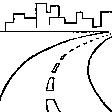
المستوطنات والبنية التحتية
التعليقات:
Основные проблемы землепользования (по мнению составителя): Это технология пользуется в условиях засолённой почвы, дефицит воды для полива растении, также предусмотрено при изменение климата
Основные проблемы землепользования (по мнению землепользователя): Способ интенсивного землепользования и получения раннего урожая
Будущее землепользование (после внедрения УЗП технологии): Пашня: Ca: выращивание однолетних
Ограничение поселения
3.3 هل تغير استخدام الأراضي نتيجة لتنفيذ التقنية؟
هل تغير استخدام الأراضي نتيجة لتنفيذ التقنية؟:
- نعم (يرجى ملء الأسئلة أدناه فيما يتعلق باستخدام الأراضي قبل تنفيذ التقنية)

الأراضي الزراعية
- زراعة سنوية

المستوطنات والبنية التحتية
3.4 إمدادات المياه
إمدادات المياه للأرض التي يتم تنفيذ التقنية عليها:
- مختلط بعلي-مروي
التعليقات:
Водопотребление: смешанное богарно-орошаемое, смешанное богарно-орошаемое, полностью орошаемое
3.6 التدابير التقنية في مجال إلادارة المستدامة للأراضي

التدابير الزراعية
- A1: الغطاء النباتي/التربة
- A2: المادة العضوية/خصوبة التربة
- A3: معالجة سطح التربة
A3: التمييز بين أنظمة الحراثة:
A 3.1: لا حرث

التدابير النباتية
- V5: أخرى
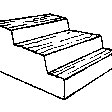
التدابير البنيوية
- S6: الجدران والحواجز وسياجات القش، والسياجات
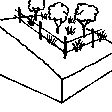
التدابير الإدارية
- M2: تغيير في مستوى الإدارة/الكثافة
التعليقات:
Основные мероприятия: инженерные
Второстепенные мероприятия: агрономические, связанные с использованием растительности, управленческие
Тип агрономических мероприятий : ранняя посадка, сменное возделывание культур, мульчирование, навоз / компост / остатки, ротация / под паром, разрушение уплотненного верхнего слоя почвы, обработка почвы без оборачивания пласта
3.7 الأنواع الرئيسية من تدهور الأراضي التي تناولتها التقنية
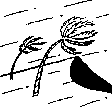
تآكل التربة الناتج عن الرياح
- (Et): فقدان التربة السطحية
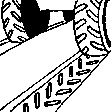
التدهور المادي أو الفيزيائي للتربة
- (Pu): فقدان الوظيفة الإنتاجية الحيوية بسبب أنشطة أخرى

التدهور البيولوجي
- (Bq): انخفاض الكمية/الكتلة الحيوية
التعليقات:
Основные типы деградации: Фб (Pu): потеря биопродуктивной функции из-за других деятельностей
Второстепенные типы деградации: Эв (Et): потеря верхнего слоя почвы, Бк (Bq): уменьшение количества / биомассы
Основные причины деградации: изменение температуры (адаптации к изменению климата), засуха (в случае засухи экономия воды), бедность / богатство (доход от теплицы), наличие работы
Второстепенные причины деградации: управление землей
3.8 منع أو حد أو عكس تدهور الأراضي
تحديد هدف التقنية فيما يتعلق بتدهور الأراضي:
- اصلاح/إعادة تأهيل الأراضي المتدهورة بشدة
التعليقات:
Основная цель: реабилитация / восстановление голых земель
Второстепенные цели: предотвращение / сокращение деградации, предупреждение деградации земель
4. المواصفات الفنية، وأنشطة التنفيذ، والمدخلات، والتكاليف
4.1 الرسم الفني للتقنية
المواصفات الفنية (المتعلقة بالرسم الفني):
На рисунке отображена схема солнечной теплицы. Так ,как это теплица отличается от других обычных тем что у этого ест три стены по назначению. Каждая сторона стенки должно правильна расположенный точна как по схеме по направлению солнце. Основная стена является как тепло сохраняющий покрашено чёрным краской. боковая стена покрашен белым краской это как отражатель солнечного луча . Крыша покрывается полиэтиленовым пленкой.
Место расположения: Южный таджикистан. Н.Хисравский район
Дата: 2011. 05.0 5.
Необходимые технические навыки для работников: средний
Необходимые технические навыки для землепользователей: средний (нужны базовые знания по агротехнике)
Основные технические функции: исскуственная консервация почвы
Вторичные технические функции: контроль дождевых брызг, улучшение земляного покрова, повышение органического вещества, повышение наличия питательных веществ (снабжение, переработка отходов,...), сбор воды / повышение водоснабжения, повышение биомассы (количество)
Ранняя посадка
Пояснение: практически круглогодично
Следующие посадки
Пояснение: 3-4 раза в году
Ротация
Пояснение: обновление раз в 3 года
Выравнивание: -по контуру
Растительный материал: Др: другие
Расстояние по вертикали между рядами / полосами / участками (м): 0.3
Расстояние между рядами / полосами / участками (м): 0.7
Изменение типа землепользования
المؤلف:
Каландаров Р., г.Душанбе. ул.Герцина 3.
4.2 معلومات عامة بخصوص حساب المدخلات والتكاليف
حدد العملة المستخدمة لحساب التكاليف:
- دولار أمريكي USD
4.3 أنشطة التأسيس
| النشاط | التوقيت (الموسم) | |
|---|---|---|
| 1. | выращивание рассады в горшочках | |
| 2. | выращивание рассады в горшочках | |
| 3. | высадка рассады | |
| 4. | высадка рассады | |
| 5. | полив, агроуход | |
| 6. | полив, агроуход | |
| 7. | борьба с заболеваниями | None |
| 8. | борьба с заболеваниями | |
| 9. | вертикальная подвязка | |
| 10. | обучение фермеров | периодически |
4.4 التكاليف والمدخلات اللازمة للتأسيس
| تحديد المدخلات | الوحدة | الكمية | التكاليف لكل وحدة | إجمالي التكاليف لكل مدخل | % من التكاليف التي يتحملها مستخدمو الأراضي | |
|---|---|---|---|---|---|---|
| العمالة | высадка рассады | человек/день | 100,0 | 5,0 | 500,0 | 50,0 |
| العمالة | борьба с заболеваниями | человек/день | 10,0 | 20,0 | 200,0 | 50,0 |
| العمالة | обучение фермеров | человек/день | 1,0 | 100,0 | 100,0 | 50,0 |
| العمالة | Полив, ремонт теплицы | теплица | 10,0 | 130,0 | 1300,0 | |
| المواد النباتية | семена | теплица | 10,0 | 50,0 | 500,0 | 50,0 |
| المواد النباتية | компост, навоз | теплица | 10,0 | 20,0 | 200,0 | 50,0 |
| المواد النباتية | пестициды | теплица | 10,0 | 20,0 | 200,0 | 50,0 |
| مواد البناء | Материал | теплица | 10,0 | 100,0 | 1000,0 | 50,0 |
| إجمالي تكاليف إنشاء التقنية | 4000,0 | |||||
| إجمالي تكاليف إنشاء التقنية بالدولار الأمريكي | 4000,0 | |||||
4.5 الصيانة/الأنشطة المتكررة
| النشاط | التوقيت/الوتيرة | |
|---|---|---|
| 1. | проветривание, полив, температурный режим | постоянно |
| 2. | смена почвы, улучшение плодородия | раз в 3 года |
| 3. | борьба с заболеваниями растений | по сезонно |
4.6 التكاليف والمدخلات اللازمة للصيانة/للأنشطة المتكررة (سنويًا)
| تحديد المدخلات | الوحدة | الكمية | التكاليف لكل وحدة | إجمالي التكاليف لكل مدخل | % من التكاليف التي يتحملها مستخدمو الأراضي | |
|---|---|---|---|---|---|---|
| العمالة | проветривание, полив, температурный режим,смена почвы, улучшение плодородия,борьба с заболеваниями растений | теплица | 10,0 | 200,0 | 2000,0 | 50,0 |
| إجمالي تكاليف صيانة التقنية | 2000,0 | |||||
| إجمالي تكاليف صيانة التقنية بالدولار الأمريكي | 2000,0 | |||||
التعليقات:
Инструменты: оборудование для сбора воды, опрыскиватели
4.7 أهم العوامل المؤثرة على التكاليف
قدم وصفا لأهم العوامل التي تؤثر على التكاليف:
труд- добровольный вклад
5. البيئة الطبيعية والبشرية
5.1 المناخ
هطول الأمطار السنوي
- < 250 مم
- 251- 500 ملم
- 501 - 750ملم
- 1,000-751 ملم
- 1,500-1,100 ملم
- 2,000-1,500 ملم
- 3,000-2,001 ملم
- 4,000-3,100 ملم
- > 4000 ملم
المنطقة المناخية الزراعية
- قاحلة
Термический класс климата: субтропики
5.2 طوبوغرافيا
متوسط الانحدارات:
- مسطح (0-2%)
- بسيط (3-5%)
- معتدل (6-10%)
- متدحرج (11-15%)
- تلال (16-30%)
- شديدة الانحدار(31-60%)
- فائقة الانحدار (>60%)
التضاريس:
- هضاب/سهول
- أثلام مرتفعة
- المنحدرات الجبلية
- منحدرات التلال
- منحدرات في السفوح
- قاع الوادي
المنطقة الارتفاعية:
- 100-0 متر فوق سطح البحر
- 500-101 متر فوق سطح البحر
- 1,000-501 متر فوق سطح البحر
- 1,500-1,001 متر فوق سطح البحر
- 2,000-1,501 متر فوق سطح البحر
- 2,500-2,100 متر فوق سطح البحر
- 3,000-2,501 متر فوق سطح البحر
- 4,000-3,001 متر فوق سطح البحر
- > 4000 متر فوق سطح البحر
5.3 التربة
متوسط عمق التربة:
- ضحل جدًا (0-20 سم)
- ضحلة (21-50 سم)
- متوسطة العمق (51-80 سم)
- عميقة (81-120 سم)
- عميقة جدًا (> 120 سم)
قوام التربة (التربة السطحية):
- متوسط ( طميي، سلتي)
المواد العضوية في التربة السطحية:
- منخفضة (<1%)
5.4 توافر المياه ونوعيتها
منسوب المياه الجوفية:
50-5 م
توافر المياه السطحية:
متوسط
نوعية المياه (غير المعالجة):
مياه الشرب سيئة (تتطلب معالجة)
5.5 التنوع البيولوجي
تنوع الأنواع:
- متوسط
5.6 خصائص مستخدمي الأراضي الذين يطبقون التقنية
التوجه السوقي لنظام الإنتاج:
- مختلط (كفاف/ تجاري)
الدخل من خارج المزرعة:
- 10-50% من جميع الإيرادات
المستوى النسبي للثروة:
- ضعيف
- متوسط
أفراداً أو مجموعات:
- فرد/أسرة معيشية
مستوى المكننة:
- عمل يدوي
الجنس:
- نساء
اذكر الخصائص الأخرى ذات الصلة لمستخدمي الأراضي:
Землепользователи, применяющие данную технологию, в основном среднестатистические
Плотность населения: 50-100 человек/км2
Годовой прирост: 2% - 3%
Ориентация производства: пропитание (для собственного потребления), смешанное (пропитание/ продажа)
5.7 متوسط مساحة الأرض التي يستخدمها مستخدمو الأراضي الذين يطبقون التقنية
- < 0.5 هكتارا
- 0.5 - 1 هكتار
- 1 -2 هكتار
- 2 - 5 هكتار
- 5 - 15 هكتار
- 15 - 50 هكتار
- 50 - 100هكتار
- 500-100 هكتار
- 1,000-500 هكتار
- 10,000-1,000 هكتار
- > 10,000 هكتار
هل يعتبر هذا نطاقًا صغيرًا أو متوسطًا أو واسعا (في إشارة إلى السياق المحلي)؟:
- على نطاق صغير
5.8 ملكية الأراضي، وحقوق استخدام الأراضي، وحقوق استخدام المياه
ملكية الارض:
- مجتمعي/قروي
- فردية، لا يوجد سند ملكية
حقوق استخدام الأراضي:
- مجتمعي (منظم)
- مؤجر
5.9 الوصول إلى الخدمات والبنية التحتية
الصحة:
- ضعيف
- معتدل
- جيد
التعليم:
- ضعيف
- معتدل
- جيد
المساعدة التقنية:
- ضعيف
- معتدل
- جيد
العمل (على سبيل المثال خارج المزرعة):
- ضعيف
- معتدل
- جيد
الأسواق:
- ضعيف
- معتدل
- جيد
الطاقة:
- ضعيف
- معتدل
- جيد
الطرق والنقل:
- ضعيف
- معتدل
- جيد
مياه الشرب وخدمات الصرف الصحي:
- ضعيف
- معتدل
- جيد
الخدمات المالية:
- ضعيف
- معتدل
- جيد
6. الآثار والتصريحات الختامية
6.1 الآثار التي أظهرتها التقنية في الموقع
الآثار الاجتماعية والاقتصادية
الإنتاج
إنتاج المحاصيل
خطر فشل الإنتاج
تنوع المنتج
الدخل والتكاليف
دخل المزرعة
تنوع مصادر الدخل
الآثار الاجتماعية والثقافية
الأمن الغذائي / الاكتفاء الذاتي
وضع الفئات المحرومة اجتماعيا واقتصاديا
الآثار الايكولوجية
دورة المياه / الجريان السطحي
حصاد / جمع المياه
التبخر
التربة
غطاء التربة
دورة المغذيات/إعادة الشحن
المادة العضوية في التربة/تحت الطبقة c
6.3 تعرض التقنية وحساسيتها لتغير المناخ التدريجي والظواهر المتطرفة/الكوارث المرتبطة بالمناخ (كما يراها مستخدمو الأراضي)
تغير مناخ تدريجي
تغير مناخ تدريجي
| الموسم | زيادة أو نقصان | كيف تتعامل التقنية مع ذلك؟ | |
|---|---|---|---|
| درجة الحرارة السنوية | زيادة | ليس جيدا |
الظواهر المتطرفة / الكوارث المرتبطة بالمناخ
الكوارث الجوية
| كيف تتعامل التقنية مع ذلك؟ | |
|---|---|
| عاصفة ممطرة محلية | غير معروف |
| عاصفة هوائية محلية | غير معروف |
الكوارث المناخية
| كيف تتعامل التقنية مع ذلك؟ | |
|---|---|
| جفاف | جيدا |
الكوارث الهيدرولوجية
| كيف تتعامل التقنية مع ذلك؟ | |
|---|---|
| فيضان عام (نهر) | ليس جيدا |
العواقب الأخرى المتعلقة بالمناخ
العواقب الأخرى المتعلقة بالمناخ
| كيف تتعامل التقنية مع ذلك؟ | |
|---|---|
| انخفاض فترة النمو | جيدا |
| понижению температуры | جيدا |
6.4 تحليل التكلفة والعائد
كيف يمكن مقارنة العوائد نسبة لتكاليف الإنشاء (من وجهة نظر مستخدمي الأراضي)؟
عوائد قصيرة الأجل:
إيجابي
عوائد طويلة الأجل:
ايجابي جدا
كيف تتم مقارنة العوائدمع كلفة الصيانة/التكاليف المتكررة (من وجهة نظر مستخدمي الأراضي)؟
عوائد قصيرة الأجل:
إيجابي قليلا
عوائد طويلة الأجل:
إيجابي
6.5 اعتماد التقنية
- > 50%
من بين جميع الذين تبنوا التقنية، كم عدد الذين فعلوا ذلك بشكل تلقائي، أي دون تلقي أي حوافز مادية/مدفوعات؟:
- 10-0%
التعليقات:
100% семей землепользователей применяют эту технологию без дополнительной материальной поддержки
15 семей землепользователей применяют эту технологию без дополнительной материальной поддержки
6.7 نقاط القوة / المزايا / الفرص التي توفرها التقنية
| نقاط القوة/ المزايا/ الفرص من وجهة نظر جامع المعلومات أو غيره من الاشخاص الرئيسيين لمصدر المعلومات |
|---|
|
быстрые выгоды для получение овощных культур зимних и неблагоприятных погода Как можно сохранять устойчивость или усилить? по мере возможности использования теплиц по расчету от 10 до 15 лет |
| защита от изменения климата |
|
технология разработан на долгосрочный использования для адаптации к изменения климата Как можно сохранять устойчивость или усилить? при случаях дефицита воды или повешения или понижения температур максимально можно использовать для получении продукции |
6.8 نقاط ضعف / مساوىء / مخاطر التقنية وسبل التغلب عليها
| نقاط الضعف/ المساوىء/ المخاطر من وجهة نظر جامع المعلومات أو غيره من الاشخاص الرئيسيين لمصدر المعلومات | كيف يمكن التغلب عليها؟ |
|---|---|
| высокая стоимость конструкции и материалов | компромисс между стоимостью и неэффективностью |
| теплица рассчитан для вырашивание овощных культур | разрабатывается другая технология |
7. المراجع والروابط
7.1 طرق جمع/مصادر المعلومات
7.2 المراجع للمنشورات المتاحة
العنوان، المؤلف، السنة، النظام القياسي الدولي لترقيم الكتب ISBN:
www.ecocentre.tj
الروابط والوحدات المواضيعية
توسيع الكل طي الكلالروابط
لا يوجد روابط
الوحدات المواضيعية
لا يوجد وحدات مواضيعية


